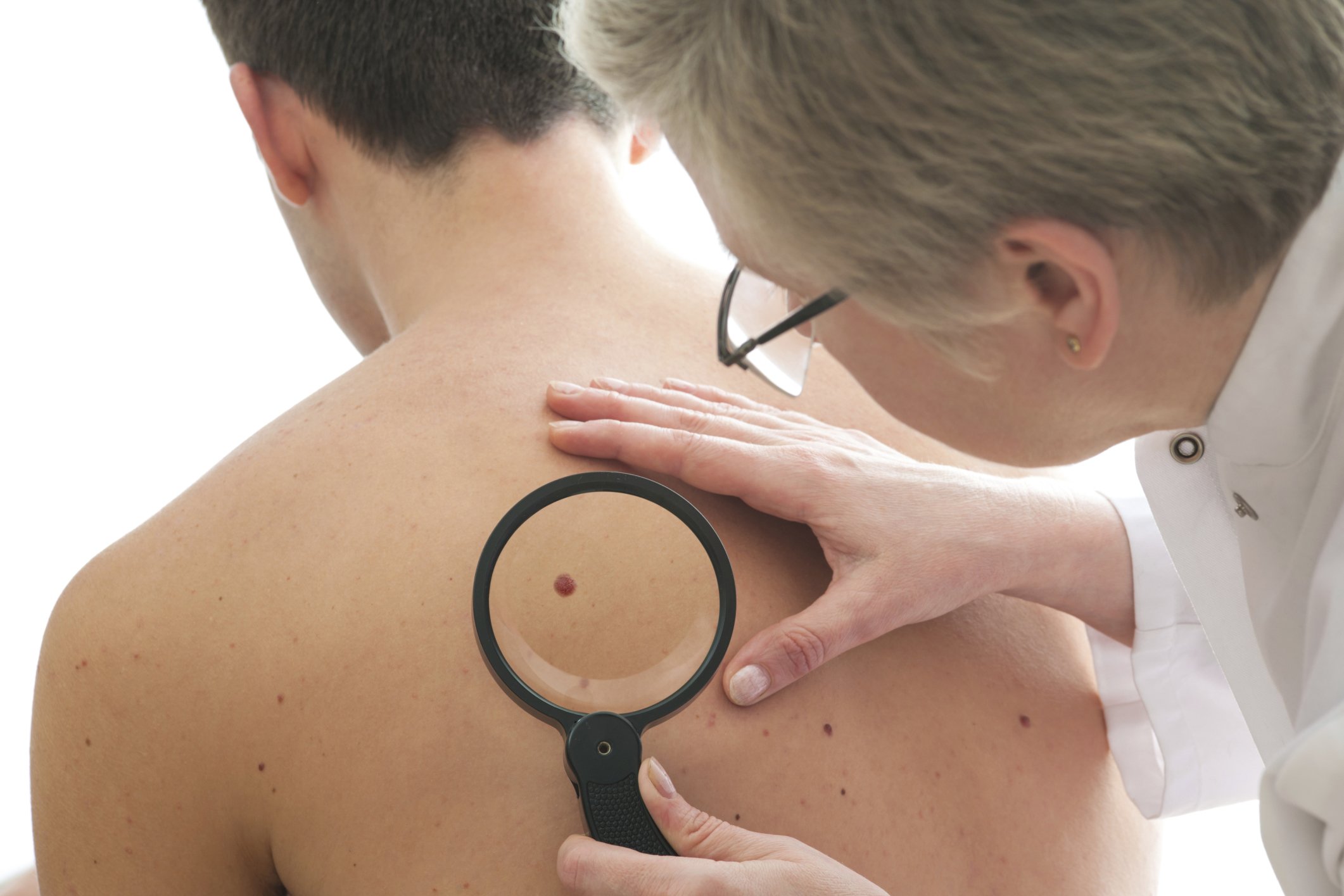Still not taking sun safety seriously?
We all know sunburn can lead to skin cancer, but it seems many of us are still burying our heads in the sand about the extent of the risks from the sun. Follow this true or false guide for a sun-safe summer
Recent research carried out for the British Skin Foundation’s It Takes 7 campaign found that more than half of us (53%) worry less about skin cancer than any other form of the disease.
Plus, the majority of us underestimate the risk of developing skin cancer, and how many people in the UK are diagnosed with malignant melanoma (the most serious form) every year – with 38% unaware that the condition can be fatal.
Are we still not 100% convinced that the British sun’s hot enough to do us any real damage? Or has the message just not sunk in properly yet? As summer heats up, make sure you know the facts…
:: Skin cancer doesn’t really kill many people in the UK
FALSE
Around 100,000 new cases are diagnosed each year, making skin cancer the most common cancer in the UK. Despite this, skin cancer is the 18th leading cause of cancer deaths, meaning in most cases, it’s easily treated.
However, it still kills around 2,500 a year, the equivalent of seven people a day – the overwhelming majority of these will have malignant melanoma which, worryingly, is on the rise.
“If skin cancer’s caught early, it’s usually treatable, but unfortunately, it’s very difficult to treat once it has spread to other parts of the body. Tragically, there is currently no treatment that will cure malignant melanoma once it has spread,” says Dr Bav Shergill, consultant dermatologist and dermatological surgeon. “Other forms of non-melanoma skin cancer can leave patients needing serious work, such as surgery, skin grafts and fillers to repair disfigurement.”
:: You don’t have to burn to get skin cancer
TRUE
It’s sometimes a mystery as to why some people develop cancer and others don’t. “While certain behaviours, like using sunbeds and not protecting your skin in the sun, can increase the risk, skin cancer can affect anyone and isn’t always a result of excessive sun exposure,” says Dr Bav Shergill. “It’s a complex disease that we still don’t fully understand, so we desperately need more research.”
However, research has found that getting a painful sunburn just once every two years can triple the risk of melanoma, and sunburn during childhood increases risk in later life. “Just 15 minutes of sunscreen-free sunshine is all you need to get enough vitamin D. If your skin starts to feel red and prickly, seek shade immediately and apply at least an SPF 30. At The MOLE Clinic, 54% of people with moles diagnosed as either skin cancer or at risk of skin cancer, reported either significant sunburn or sunbed use, so it is important that you avoid excessive sun exposure and sunburn at all costs,” says Rebecca Maxwell, skin cancer screening nurse at The MOLE Clinic.
:: Skin cancer is only ever serious for very pale people who don’t tan
FALSE
“Although skin cancer is more common in people with fair skin, it can affect anyone,” says Dr Virginia Hubbard, consultant dermatologist at London Bridge Hospital. “Skin cancer is serious, whatever a person’s skin type, but the earlier it is spotted, the better the prognosis.” While people with naturally pale skin, freckles and fair or red hair may be at a higher risk, skin cancer can occur in any skin tone. “Black people do get skin cancer [too], and everyone of every skin colour should be vigilant about changes in moles,” adds Hubbard.
:: Only moles that look unsightly and sinister can be cancerous
FALSE
“Some melanomas do look unsightly, but not all,” says Dr Virginia Hubbard. “If a person has lots of similar moles with one that looks different to the others, it’s worth getting an expert to look at it,” she adds, though some may appear fairly innocent to begin with.
Also, not all skin cancers look like moles at all. For example, basal cell carcinoma (BCC) and squamous cell carcinoma (SCC) may appear as a red or waxy-looking lump or scaly patch, or lesions which don’t heal.
:: It’s a good idea for everybody to self-monitor their moles
TRUE
The same way we check breasts and testicles for unusual lumps, being familiar with markings on your skin’s a good idea, so if you do notice new moles or changes, you can keep an eye on them. “All new or changing moles should be monitored,” says Rebecca Maxwell. “Self-monitoring is easier than you think; just remember the ‘ABCDE’ rule.”
ABCDE RULE:
A: Look for moles that are asymmetrical in shape, where one half of the mole is unlike the other.
B: Does the mole have an irregular border? Is it scalloped, jagged or poorly defined?
C: Is the colour of the mole different from one area to another, or does it have different shades of tan, brown or black?
D: Check the diameter of the mole to see if it is bigger than 7mm (about the size of the end of a pencil).
E: Is the mole evolving or changing size, shape or colour?
“It is really important to take note of ‘E’, as any mole that is evolving or changing needs to be examined by a GP or an expert right away,” adds Maxwell. And remember that skin cancer may also occur in places like under fingernails, the lips and beneath hair on the scalp.
:: You only really need suncream if you’re sunbathing
FALSE
Of course, slapping on the SPF before a long day at the beach is vital, but don’t forget to protect your skin during other activities, like going for summer walks, doing the gardening or if you’re working outdoors. Also, make sure you re-apply as required and cover all exposed areas. Legs are the most common area for melanomas to develop in females, followed by the arms, while in men it occurs most on the torso, head then neck.
“The recommended amount [of suncream] is two milligrams for every square centimetre of skin – that’s the equivalent to an amount the size of a £2 coin to cover the whole of one arm and hand,” advises Clare O’Connor, Boots UK sun care expert. “It takes approximately three tablespoons for a full body application.”
And “suncream is just one aspect of UV protection”, she adds. “A hat protects those sensitive areas that may get missed when applying suncream, like the scalp, hair parting and tops of ears and nose. Choose a wide-brimmed style over a baseball cap for more protection around your head, neck and shoulders.” Sunglasses with UV protection are also important, O’Connor notes.
Disclaimer
All content on Silversurfers.com is provided for general information only, and should not be treated at all as a substitute for the medical advice of your own doctor or any other health care professional. Silversurfers will not be responsible or liable for any diagnosis made by a user based on the content on www.silversurfers.com and we are also not liable for the content of any external websites or links from or to Silversurfers to any other websites. Please always consult your own doctor if you’re in any way concerned about any aspect of your health.
Latest posts by Sally - Silversurfer's Editor (see all)
- Pocket money memories - March 14, 2025
- Belton Farm Red Fox Mac and Cheese Croquettes - March 11, 2025
- Downsizing & decluttering: A guide to simplifying your life - March 11, 2025
- Make your roof work for you: The smart way to save with solar - March 10, 2025
- Top five Fred. Olsen Cruise Deals - March 10, 2025




















